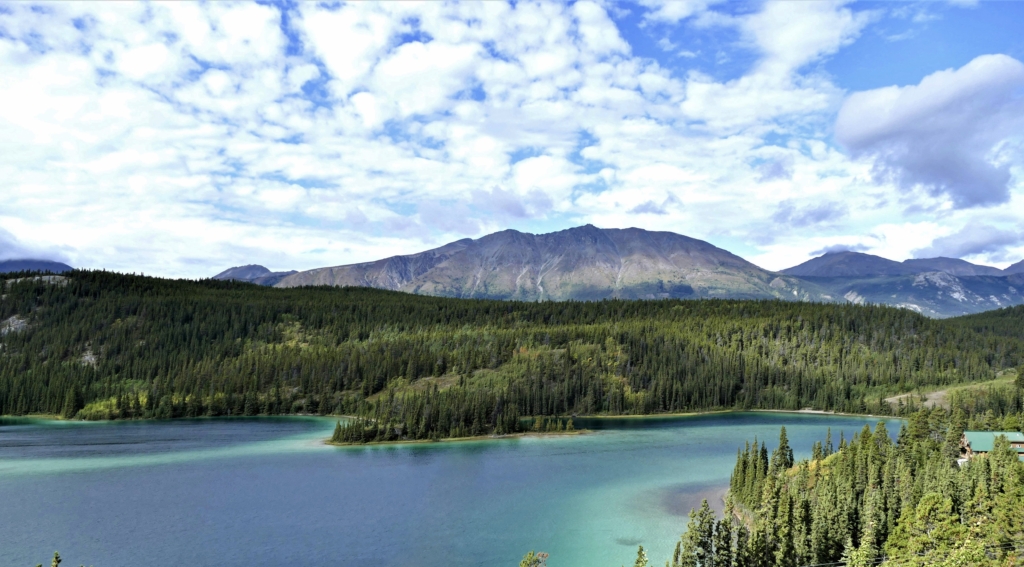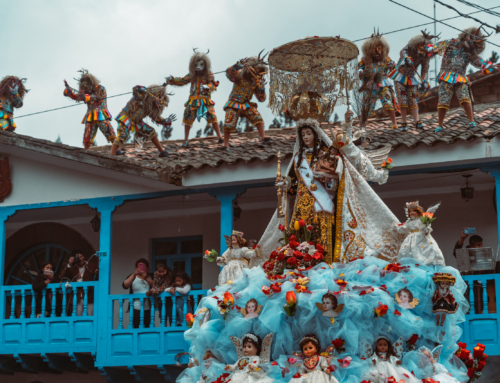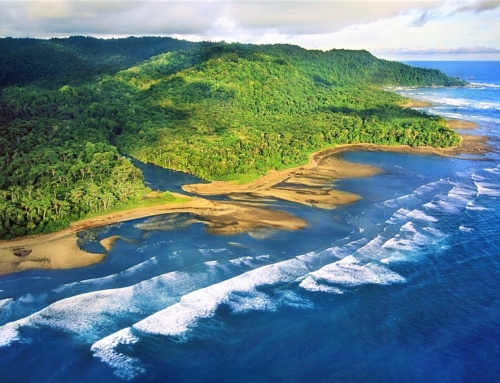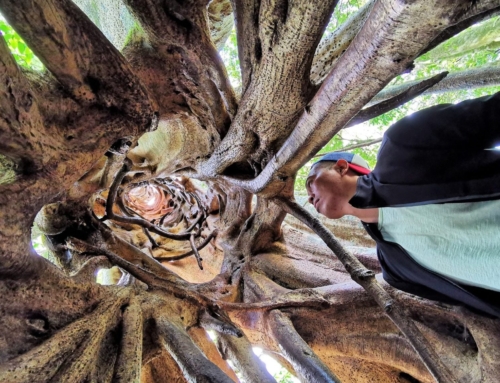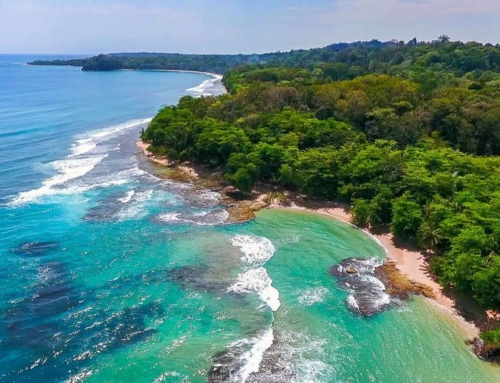A Traveler’s Must-Read Guide to the Chilkoot Trail Hike
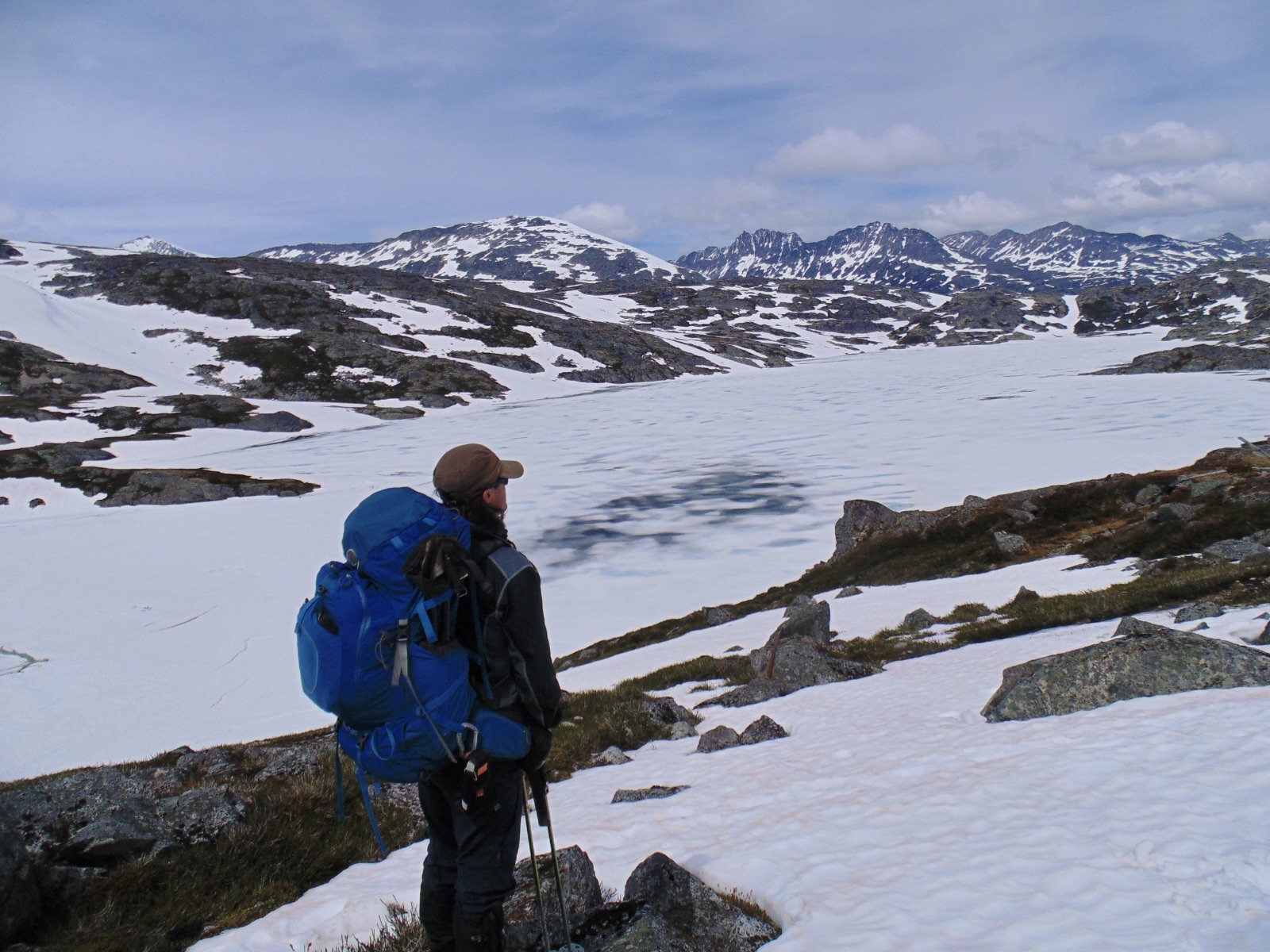
The Chilkoot Trail is one of the most legendary trails in the Americas. Yes, it’s a cross-section of eye-wateringly gorgeous Coast Range territory, replete with lush forests, sweeping valleys, pristine lakes, and barren tundra that creeps up to a famous snow-covered mountain pass. But a hike along the Chilkoot Trail also brings you past places of great historic importance, as one of the main routes for miners during the Klondike Gold Rush of the 1890s.
This guide runs through all the ins and outs of this great trail. It’s got information on the history of the national park – the very rich, enthralling history of it all. Plus, it also includes the most popular itineraries, along with practical information like the best season to go and the sort of terrain you can expect to encounter along the trail. Let’s get into it!
My experience on the Chilkoot Trail
The Chilkoot Trail hike is different from a lot of treks I have taken – and I’ve taken a lot. I’ve been very fortunate to have explored many corners of this incredible planet. In fact, I’ve made travel my career by founding The Explorer’s Passage (TEP), a premier industry award-winning adventure travel company with trips in the Yukon region and all around the world. We’ve been taking satisfied travelers on adventures for years and look forward to you joining us soon!

Up in the high Himalaya or the Argentine Andes, most crave routes that whisk you away from civilization, where few boots have left footprints. But here on the Chilkoot Trail, the earth is sacred precisely because of what’s gone before. Following in the footsteps of as many as 100,000 prospectors who drove the Klondike Gold Rush back in 1896 is what makes this hike as much about history as it is about the raw and wild nature you’ll encounter along the way.
For me, hiking the Chilkoot Trail was like walking back in time through history to the Klondike Gold Rush. I treasured standing on the snowdrifts of the blustery Chilkoot Pass, still palpably haunted by the ghosts of gold-hungry miners. Still scattered at Canyon City Camp, one of the original pitstops en route to the Yukon claims, were remnants of supplies and food cans left by hopeful miners. I’ll also always remember spotting Gold Rush-era building foundations, old cabins, and rusted-out restaurant stoves.
This national historic park is Jack London country, a place indelibly feral but steeped in enthralling human stories. This all left me so intrigued, inspired, and eager to learn more about the Yukon backcountry when I hiked the trail. Thankfully, educational signage at each site along the way grants you a look into the colorful stories of the past.
Interested? Check out our awesome Chilkoot Trail Adventure
What’s in this guide?
- History of the Chilkoot Trail
- Where is the Chilkoot Trail?
- How to get to the Chilkoot trailhead?
- All about Whitehorse & things to do
- When to do the Chilkoot Trail hike?
- Passes and permits for hiking the Chilkoot Trail
- Camps and accommodations on the Chilkoot Trail
- Terrain on the Chilkoot Trail
- How difficult is the Chilkoot Trail hike?
- Sample Chilkoot Trail hike itinerary
History of the Chilkoot Trail
The Chilkoot Trail existed long before the Gold Rush of the 1890s. It was used for decades by the Tlingit people as a way of transporting goods down from the heights of the Yukon to trading outposts further south. When pioneering prospectors Skookum Jim and George Carmack hit gold, things really took off.
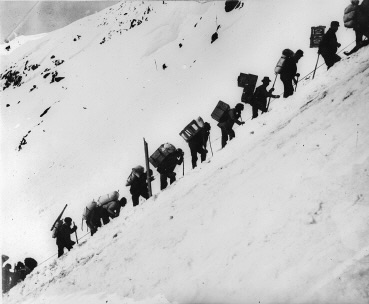
News quickly spread of new claims on a small tributary of the Klondike River near Dawson City, while further discoveries of gold on adjoining creeks pushed the speculation to feverish heights. Less than two years later, an estimated 100,000 miners with dreams of hitting it big were moving north to the Yukon. But there were only a few main trails through the Coast Ranges to where the gold lay, one of which was the Chilkoot.
In the height of the Gold Rush, there were whole cities of tents clustering along the trail. The most famous section of all – the Chilkoot Pass – is now an iconic image of the era, clogged with men and pack donkeys, and even hosting some of the earliest examples of working aerial tramways. The whole trail is now a designated national historic park on both sides of the border.
Where is the Chilkoot Trail?
The Chilkoot Trail hike starts in the United States and ends in Canada. More specifically, it passes from the ghost town of Dyea, Alaska, to the outpost of Bennett in British Columbia, linking the courses of the Yukon River to the very northern end of the Inside Passage. Today, a hike on the Chilkoot Trail will also take you through a series of designated national historical sites known cumulatively as the Klondike Gold Rush National Historical Park.
How to get to the Chilkoot trailhead?
Gone are the days when folks would have gained access to the Chilkoot Pass by hopping on a steamer to take them the length of the Inside Passage from the ports of San Francisco. Today, the best way to the trailhead is via Whitehorse, the capital of the Yukon. It’s over the border in Canada and you can either take a bus, train, or private car to Skagway, Alaska.
Skagway is a popular stop for many Alaskan cruises and also the city where many hikers rest before they head to Dyea to start their Chilkoot journey. There’s an international border crossing along the trail, so be sure to have your passport ready.
Getting to Whitehorse in the first place shouldn’t be too hard. The town is home to the Erik Nielsen Whitehorse International Airport, which now has links to Vancouver, Calgary, and even Frankfurt on various airlines.
All about Whitehorse & things to do
As mentioned, Whitehorse is the capital of the Yukon Territory. The Yukon area offers so much to do, including these six popular activities. The territory is larger in size than the whole of Sweden and yet its population is much more modest. Most of its residents, more specifically around three-fourths or an estimated over 33,000 people, live in Whitehorse. It’s a small but vibrant community where you can get a fine introduction to the history of the Klondike Gold Rush.
This is why Whitehorse is also the place where most people base themselves before and after an attempt at hiking the Chilkoot Trail. Don’t miss the MacBride Museum of Yukon History, which chronicles the Yukon’s industrial awakening, or the Old Log Church Museum, which was built in the 1900s by prospectors who’d crossed the pass. There are also a couple of hearty brewhouses and taverns for rewarding Yukon beers and food once you’re done hiking and camping over the Coast Range.
When to do the Chilkoot Trail hike?
Hiking season for the Chilkoot Trail is from June through mid-September. These are the months where national park authorities on both the Canadian and U.S. sides of the border issue 50 permits per day.
If you’re wondering about the local weather, it’s not unusual to find snow in the higher reaches in the peak of the summer season. Most people agree that the best time to hike the trail is in July or August, when you’re more likely to get dry weather and clear skies.
A trip to the Chilkoot Trail during the off-season offers its own range of winter activities, from ski touring and snowshoeing to dog sledding and snowmobiling. Year round, you’ll also find those who flock to the national historic trail for birdwatching, photography, and alpine lake fishing.
Passes and permits for hiking the Chilkoot Trail
Every hiker on the Chilkoot Trail camping overnight in the national historic park between the peak hiking months of June, July, August, and early September must get a permit. They’re issued by Parks Canada and should be booked for a specific date beforehand, where you’ll select which campgrounds you’d like to use. There’s a limit of 50 hikers on the trail each day during permit season.
If you need help planning, not to worry – our team can help take away the stress and secure the permits and passes necessary to hike this national historic trail. All you have to do is show up!
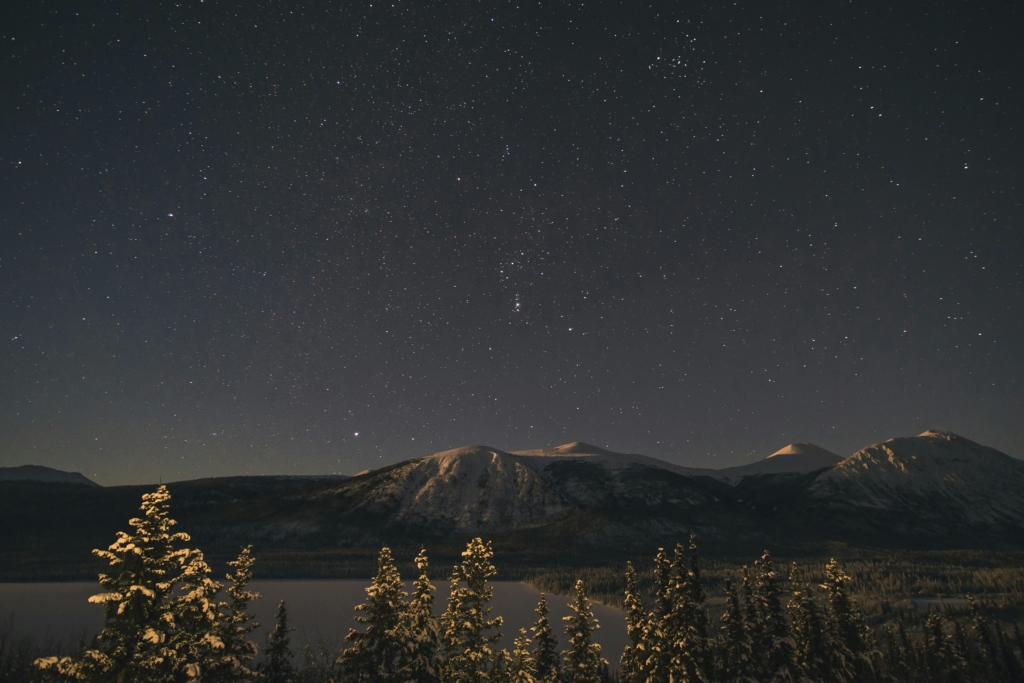
Camps and accommodations on the Chilkoot Trail
There are nine official campgrounds along the course of the Chilkoot Trail hike, plus one in Dyea (Dyea Campground). In the order you’ll pass them, they are Finnegan’s Point, Canyon City, Pleasant Camp, Sheep Camp, Happy Camp, Deep Lake, Lindeman City, Bare Loon Lake, and Bennett. They are all backcountry camping (meaning they can only be accessed by foot), apart from Dyea’s, which you can reach by car from Skagway.
The quality of the camping sites is generally high all around and very well maintained by the U.S. and Canadian national park authorities. Most have semi-permanent tent structures, bear boxes to store food, and composting outhouses, along with 10-20 pitches. Some have cabins with permanent heating. There are also one or two along the trail that are steeped in history – like the Canyon City Campground we visit on day two of our trek, which is a short detour away from a Gold Rush ghost town!
Terrain on the Chilkoot Trail
Terrain wise, the Chilkoot Trail hike is a real mixed bag. It begins in the U.S. on the lush and wet slopes of the Coast Mountains. The region gets extensive rainfall from the Pacific Ocean, which means the first section of the hike goes through emerald rainforest past alpine lakes. You’ll hardly even glimpse the high peaks there in the backcountry, what with clusters of alders and cottonwoods hemming in the path. The hiking is relatively easy at this stage, but it is bear territory, so appropriate precautions are necessary.
After passing the 3,000-foot (914-m) mark, hikers will enter the Alpine tundra zone. It’s a more barren landscape past the trees, with only a few patches of dwarf forest and rocks covered in lichen blooms. This is the hardest part of the trail, especially along the Chilkoot Pass section, which requires some scrambling and steep ascents on wet stones.
After crossing the famous Chilkoot Pass, you get into the Subalpine regions of the trail that lie on the drier Canadian slopes. They’re home to pine trees and pine cone-covered forest ground. Bears are an issue here too and the trail is highly exposed in certain areas.
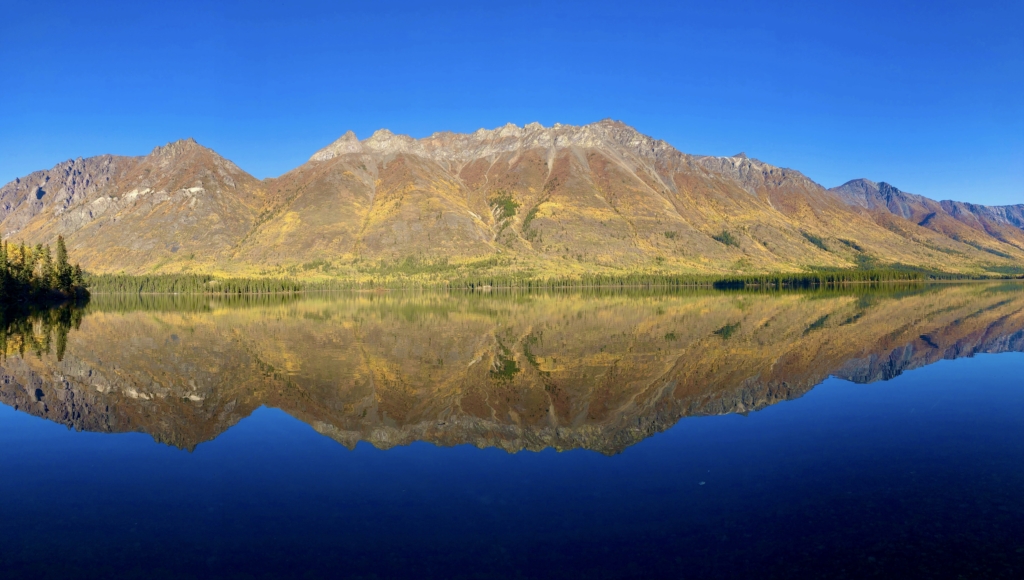
How difficult is the Chilkoot Trail hike?
Don’t be fooled by the relatively short length of the Chilkoot Trail hike. It might only be 33 miles (53 km) long from start to finish, but there are sharp altitude gains and some challenging terrain to contend with. Adding to all that is the infamously changeable weather of the Pacific Coast Ranges. Snow is never impossible, but not likely if you hike the Chilkoot Trail in the summer season like most. However, rainfall can be heavy and sudden in the national park, adding extra challenges to key sections like the rocky Chilkoot Pass; the same goes for much of the White Pass trail from Skagway, which also leads to the head of the Yukon.
Overall, we’d say that the Chilkoot Trail is a moderately challenging hike that requires a good all-round level of fitness. It can be made a little easier by spreading the length over more days (some hikers take as long as five days, others just two or three). Some long-distance hiking experience in high-alpine and exposed terrain will go a long way too. My team at The Explorer’s Passage offers personalized pre-trip calls to help you prepare, as well as a guide on suggested training in the weeks or months before your trip.
Not sure if this hike is right for you? Contact us and we’ll walk you through more details on the physical demands and recommended training so you can make an informed decision.
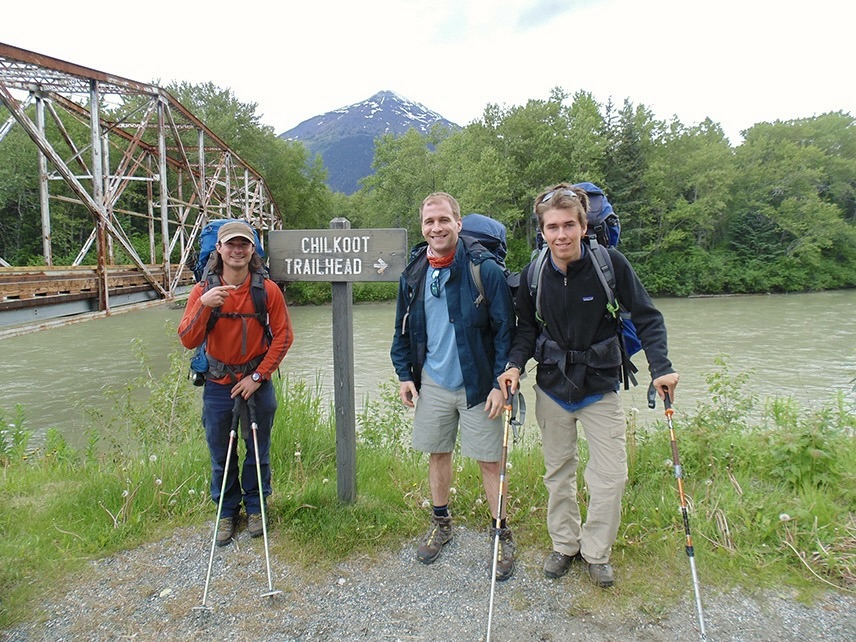
Sample Chilkoot Trail hike itinerary
We package our overall Chilkoot Trail adventure into an exciting eight-day itinerary that includes a visit to the historic capital of the Gold Rush in Whitehorse and a trip on the vintage White Pass and Yukon Route Railway. The actual hike starts on day three and lasts five days.
If you have a vision in mind and would like a customized itinerary, we’re ready to work with you to bring it to fruition. Here’s a glimpse at what to expect each day when hiking the Chilkoot Trail with The Explorer’s Passage:
- Day 1 – Arrival in Whitehorse
Welcome to Whitehorse! Upon arrival, a TEP representative will greet you at the airport and bring you to your hotel. Begin your great northwest wilderness adventure with a scenic walking tour. In the evening, enjoy a festive meal at one of our favorite Whitehorse restaurants.
- Day 2 – Whitehorse to Skagway
Today we’ll drive south on the Klondike Highway, catching views of the beautiful Yukon lakes and mountains. Then, you’ll ride the White Pass and Yukon Route Railway to Skagway, Alaska to finish the 108-mile (174-km) trip. Enjoy picturesque views of mountains, glacier lakes, gorges, and waterfalls along the way. The primary route to the Yukon during the Klondike Gold Rush and most of the 20th century, the White Pass and Yukon Route is a historic landmark of civil engineering.
Once in Skagway, you’ll find a coastal town perched against a lake at the northern terminus of the Lynn Canal, the world’s largest fjord, and the home of the White Pass Trail. Take a walking tour of Skagway and browse the town’s shops, showcasing artifacts from the days of the Gold Rush. Rest up for your first day on the Chilkoot Trail tomorrow.
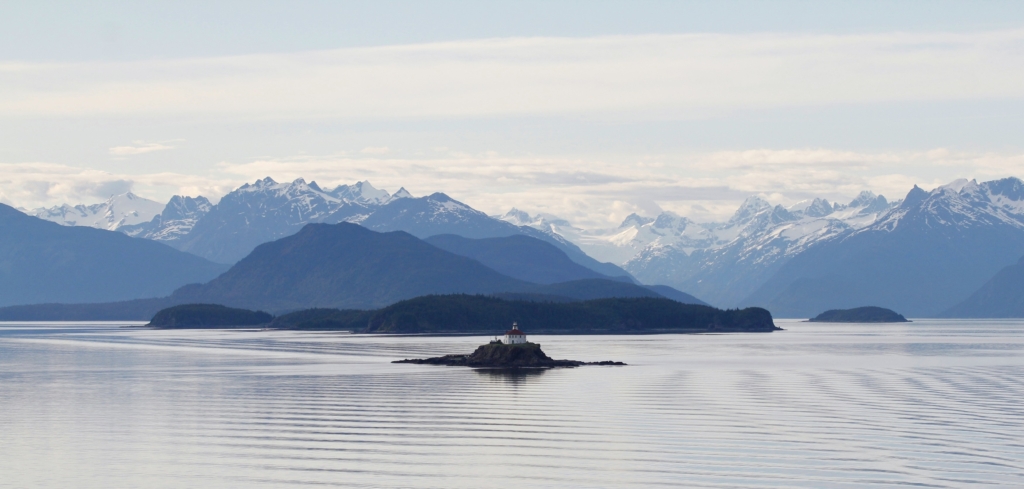
- Day 3 – Begin Chilkoot Trail hike from Dyea to Canyon City Camp
The town of Dyea is your starting point for the hiking journey. Neighboring Skagway, this area was once the main outpost and supply town for the whole of the Klondike Gold Rush. Tens of thousands of prospectors would have passed through here in the final years of the 19th century, looking for the same trailhead as you, which lies over a rusting metal bridge to the northeast. Find that and your initial day is an eight-mile (13-km) romp through blooms of big ferns and hemlock trees to Canyon City Camp.
- Day 4 – Canyon City Camp to Sheep Camp
Starting in the mist-swathed rainforests at Canyon City Camp, you press on through the backcountry and the last remaining vestiges of the rainforest. Today takes you from nearly 500 feet (153 m) above sea level to over 1,000 feet (305 m), which is where the transition zone between the woods and the alpine tundra begins. Initially following the path of the Taiya River northwards, you soon veer east, also with the river. As the trees thin out a touch towards the end of the five miles (9 km), you might catch your first glimpses of the snow-capped Coast Range on the horizon en route to Sheep Camp – the final resting stop before the hike up Chilkoot Pass.
- Day 5 – Summit the Chilkoot Pass into Canada to Happy Camp
Crossing the Chilkoot Pass is the trekking session that really defines the Chilkoot Trail hike. You’ll leave behind the lush Pacific Northwest rainforest and enter the barren tundra zone high above the treeline. Just under halfway through the eight-mile (13-km) hike, you come to the point known as The Scales, named as such because it was where the miner’s wares were weighed before being bundled up and sent over the pass.
Up ahead is the Chilkoot Pass itself. The only way there is via the Golden Stairway, the most challenging part of the hike that consists of a high-gradient climb on broken rocks. Finishing that ascent, moving from 1,000 feet (305 m) above sea level to over 3,500 feet (1,065 m), you’ll be in Canada, where you skirt glimmering Crater Lake and move down to Happy Camp for the night.
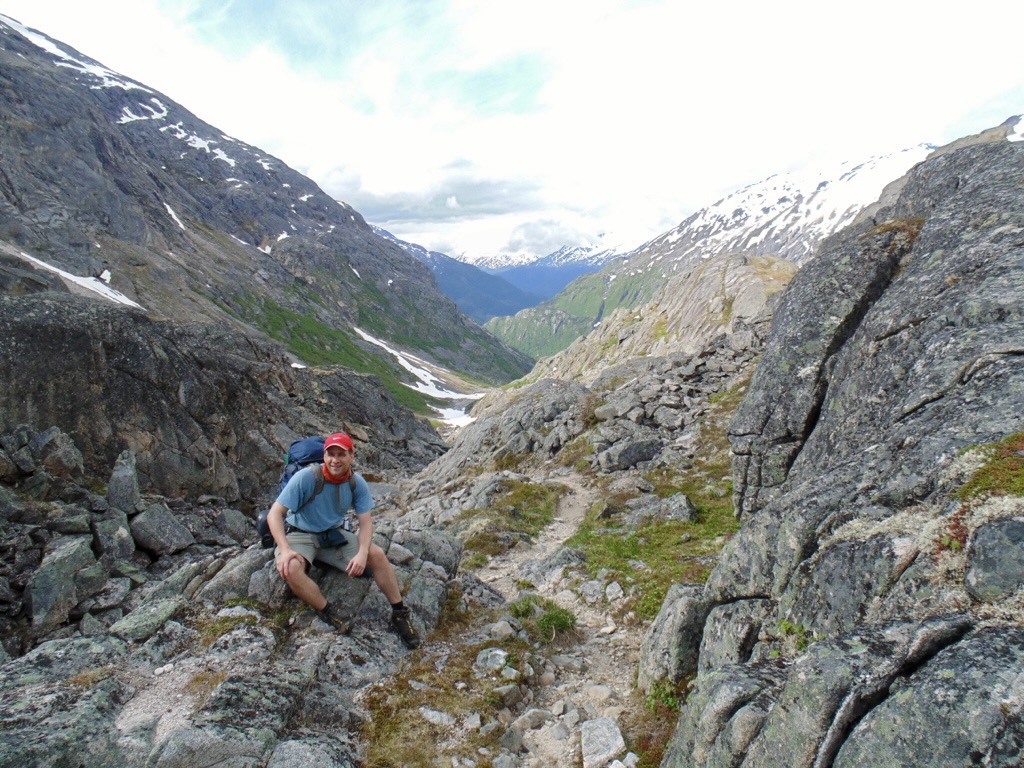
- Day 6 – Happy Camp to Lindeman City
As the Chilkoot Pass and Happy Camp fade into the background, the landscapes become dominated by pockets of fragrant pine woods. The six-mile (10-km) descent here is across broad plateaus flanked by muscular mountains; an altogether more alpine place than the lush western slopes you climbed from. There’s a pitstop midway for those brave enough to swim (or fish) in the icy waters of Deep Lake. Things finish with camp at Lindeman City, where there’s an historical exhibition on the heritage of the Chilkoot Trail.
- Day 7 – Finish Chilkoot Trail hike at Lake Bennett
A final seven-mile (11-km) day of hiking on the Chilkoot Trail will lead you past the scenic Bare Loon Lake, ending at Lake Bennett today. Once at Bennett, you’ll find what has essentially become a ghost town today consisting of a few houses owned by White Pass employees or First Nations peoples who have lived in the region since long before Gold Rushers were making their way across the Chilkoot Pass. Explore one of the last-standing buildings at Bennett, Saint Andrews Presbyterian Church, which once served as a popular gathering spot for these miners.
From Bennett, enjoy a scenic floatplane ride over the Coast Mountains north back to where it all began, Whitehorse. In the evening, we’ll paddle along the mighty Yukon before indulging in our farewell dinner on the banks of the river.
- Day 8 – Final day in Whitehorse/Yukon Territory
Make the most of your last day in Whitehorse by spending it as you wish. When you’re ready to head out for your flight home, we’ll have your airport transfers already set up and look forward to having you travel with us again soon!
Interested? Check out our awesome Chilkoot Trail Adventure
Why travel with The Explorer’s Passage?
Experience the Chilkoot Trail hike with the best guides in the Yukon region. We pride ourselves on delivering extraordinary tours based on travelers’ needs and are humbled by our guests’ testimonials. In fact, our dedication to sustainable adventure has earned us a 5-star rating on Tripadvisor, and awards by Travel+Leisure Magazine and Newsweek. Check us out and discover why so many travelers worldwide choose us. My team and I would love for you to join us in this national historic park along the Chilkoot Trail hike or any of our many other adventure trips!
Cheers,
Jeff
Jeff Bonaldi
Founder & CEO
The Explorer’s Passage
About Jeff Bonaldi
Jeff Bonaldi is the Founder and CEO of The Explorer’s Passage, a premier adventure travel company. His mission is to provide travelers with the opportunity to transform their lives and the planet through the power of adventure.
Learn more about Jeff’s story and his company HERE.


